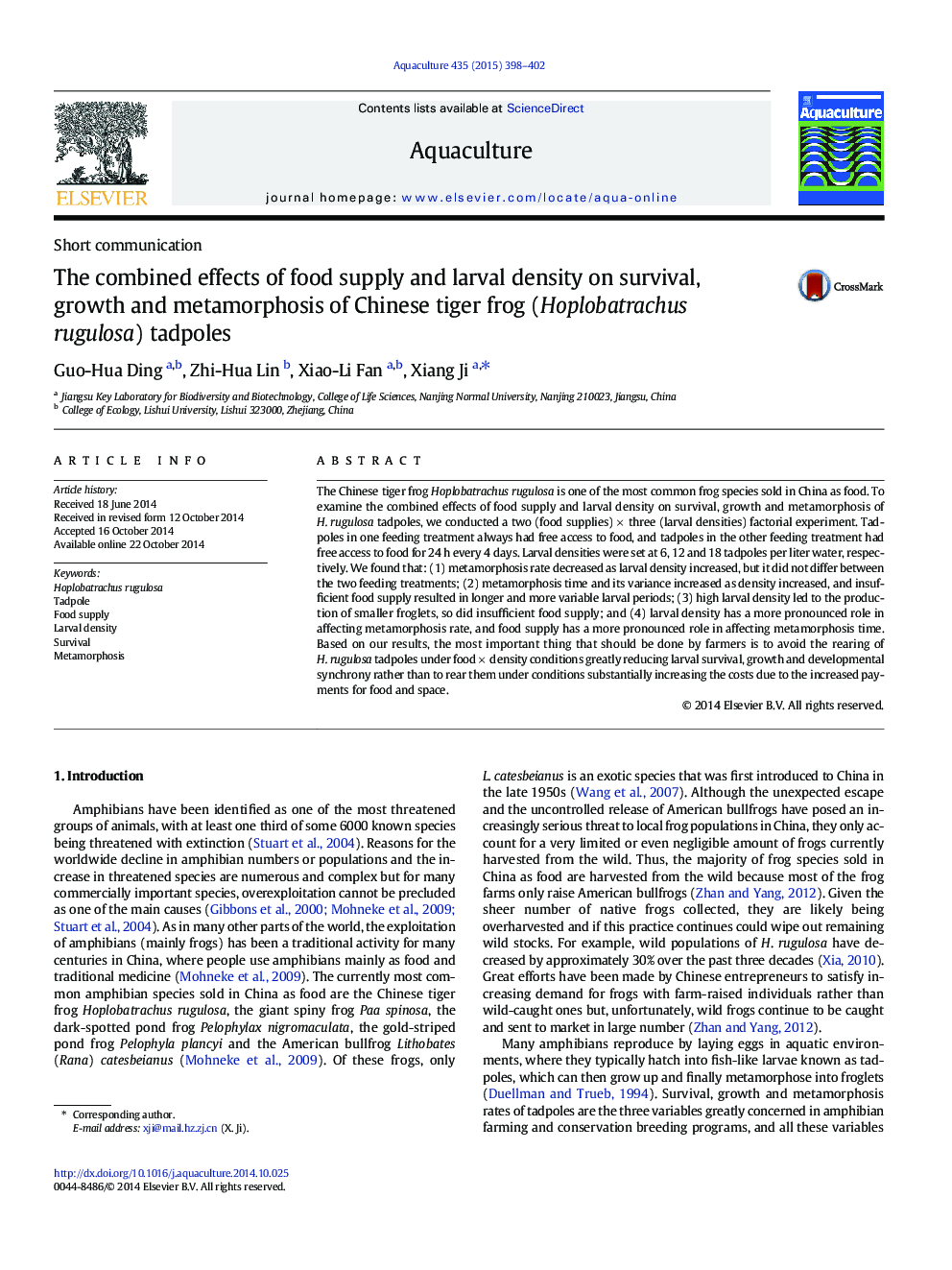| Article ID | Journal | Published Year | Pages | File Type |
|---|---|---|---|---|
| 8494973 | Aquaculture | 2015 | 5 Pages |
Abstract
The Chinese tiger frog Hoplobatrachus rugulosa is one of the most common frog species sold in China as food. To examine the combined effects of food supply and larval density on survival, growth and metamorphosis of H. rugulosa tadpoles, we conducted a two (food supplies) Ã three (larval densities) factorial experiment. Tadpoles in one feeding treatment always had free access to food, and tadpoles in the other feeding treatment had free access to food for 24 h every 4 days. Larval densities were set at 6, 12 and 18 tadpoles per liter water, respectively. We found that: (1) metamorphosis rate decreased as larval density increased, but it did not differ between the two feeding treatments; (2) metamorphosis time and its variance increased as density increased, and insufficient food supply resulted in longer and more variable larval periods; (3) high larval density led to the production of smaller froglets, so did insufficient food supply; and (4) larval density has a more pronounced role in affecting metamorphosis rate, and food supply has a more pronounced role in affecting metamorphosis time. Based on our results, the most important thing that should be done by farmers is to avoid the rearing of H. rugulosa tadpoles under food Ã density conditions greatly reducing larval survival, growth and developmental synchrony rather than to rear them under conditions substantially increasing the costs due to the increased payments for food and space.
Related Topics
Life Sciences
Agricultural and Biological Sciences
Aquatic Science
Authors
Guo-Hua Ding, Zhi-Hua Lin, Xiao-Li Fan, Xiang Ji,
